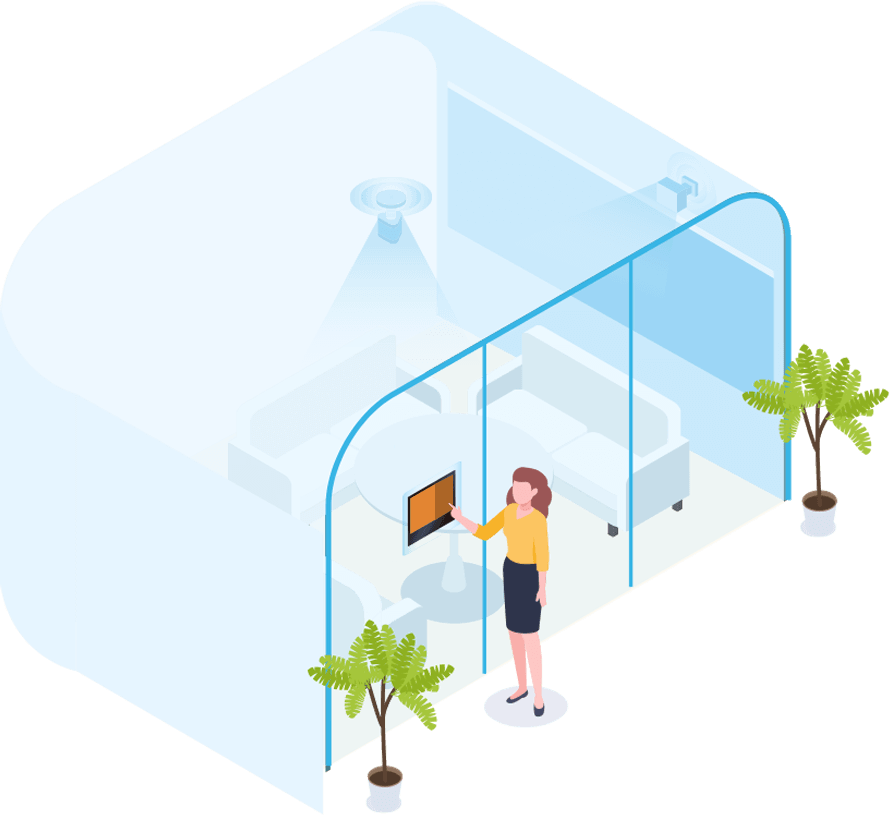Smart Office
What is a
Smart Office?
A smart office, also known as the responsive or digital workplace, is a tech-enabled office where smart office technology is leveraged to automate the routine and improve comfort, efficiency, and productivity amongst employees. By utilizing connected technology and data analytics, smart offices ensure that every aspect of the workplace campus, from collaborative tools to the built space, can respond to the specific needs of employees at any given time.
The hot wind of the smart office rises because of the changing workplace dynamic. From working from home, activity-based working to hybrid work, employers need connected workforce more than ever. And an ecosystem of platforms, connections, and technological solutions becomes the key enabler to understanding how the workplace can best serve employees so they can work productively. In today’s most successful workplace strategies, a smart office takes the central stage.
How Does Smart
Office Work?
Typically, a smart office consists of technologies that we meet in the broader context of smart building, collaboration, management tools, and workplace analytics in general. Here are just a few examples of what a smart office might include:
Internet of things (IoT)
IoT is not a precise tech tool, but rather a network where data of different office devices are auto exchanged and analyzed. It offers the technology base for device remote control and automation. For example, the auto-adjusting of the office lighting and heating based on the real-time environmental data collected by smart sensors. An IoT network can consist of many applications: central control app, security cameras, door locks, sensors, to name a few.
Smart Meeting Rooms
Smart meeting rooms are powered by intelligent technology that integrates hardware and software tools into the meeting space to create a highly productive meeting experience for remote and in-person attendees. These tools typically include:
Room Booking Application, which offers a unified platform for scheduling meetings, office space reservation, and management.
Smart Sensors that measure space CO2, air quality, and occupancy levels in real-time.
Interactive Room Display, an information hub that typically shows the room name, and availability at the door.
Conference facilities, including video conferencing hardware and software, projector, whiteboard, etc.
Smart Desks
Smart desks enhance various aspects of the employees’ amenities, well-being, and productivity. Depending on its system, it provides hot-desking, find-a-colleague, reservation check-in/check-out, sanitization, and alike features that help organizations to optimize workplace desk utilization with minimal effort.
Visitor Management System
Visitor management system plays a vital role in maintaining office security and transparency. They can incorporate staff sign-in, visitor pre-registration, security checks, and contact tracing capability to automate the visitor access control and improve the visitor experience.
The Benefits of
a Smart Office
On a practical as well as an operational level, smart offices are highly beneficial for employees. They bring out the best in people at work by simplifying their day-to-day activities.
Improve collaboration. Easier to meet up and find space for impromptu meetings. An organization where collaboration is encouraged is more likely to tap into the creativity and ingenuity of its workforce.
Boost productivity. Remove menial tasks and unnecessary obstacles with automation in daily company workflow. Take meeting room booking as an example. You will be able to speed up booking requests with a few clicks on your PC, laptop, or even smartphone. Double-booking is a thing of the past.
Better use of office space. Automatically free up “no-shows” office space reservations. Leverage hot-desking to accommodate more people with fewer desks. Use workplace data to uncover patterns around space usage and make timely adjustments.
Actionable utilization insights. Smart office technologies mentioned above can help to record, collect, and analyze your workplace data. And they help you discover how your employees are working.
Featured Solution
Related Terms



